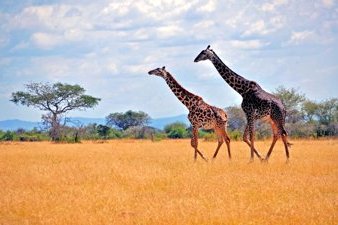 London / Nairobi – Some countries’ sovereign debt ratings may be less robust than many investors may realize, if depletion of natural resources are taken into account, a new report released on November 19 suggests.
London / Nairobi – Some countries’ sovereign debt ratings may be less robust than many investors may realize, if depletion of natural resources are taken into account, a new report released on November 19 suggests.
Loss of soils, forests and fisheries, as well as rising resource costs, are likely to become increasingly important to a nation’s economic health, and may affect its ability to repay or refinance sovereign debt, says the study issued by the United Nations Environment Programme’s Finance Initiative (UNEP FI).
The report suggests that factoring the way a country manages natural assets into sovereign bond ratings may not only give investors increased transparency when making investment decisions, but also encourage governments issuing sovereign debt to manage their natural resources more sustainably in order to attract investors over the medium to long term.
In its analysis of five pilot countries, the report, “E-RISC: A New Angle on Sovereign Credit Risk”, highlights major financial challenges due to the growing gulf between rising demands on freshwater, forests, soil, grazing land and other natural resources, and the goods and services that domestic ecosystems are able to sustainably provide.
The report, produced by UNEPFI and Global Footprint Network in collaboration with a number of asset owners, investment managers and information providers, shows that India now demands over 1.8 times more from its ecological assets than they are able to generate. Other countries are seeing similar trends.
By negatively impacting countries’ natural capital and economic stability, resource degradation has the potential to exacerbate the sovereign debt crises that have helped trigger, and deepen, the global economic downturn.
Yet despite this, such environmental risks remain largely absent from traditional models that determine sovereign credit ratings, and other traditional indicators of economic resilience.
“We are seeing a paradigm shift due to natural resource scarcities with profound implications for economies and, thus, sovereign debt risk worldwide,” said United Nations Under-Secretary-General and UNEP Executive Director Achim Steiner at the launch of the report in London.
“The time has come for a better understanding of the connection between environmental risk, and sovereign credit risk. Only then will investors, credit rating agencies and governments be able to plan effectively with the kind of insight aimed at ensuring long-term economic health and stability,” said Mr. Steiner.
“More and more countries depend on a level of resource demand that exceeds what their own ecosystems can provide,” said Susan Burns, Founder of Global Footprint Network.
“This trend is tightening the global competition for the planet’s limited resources and represents risks for sovereign bond investors as well as countries issuing such bonds. A more accurate description of economic reality is, therefore, in everyone’s interest,” added Ms. Burns.
Argentina, the United States and Eurozone states including Spain, Italy and Greece are among the countries that have seen their sovereign debt downgraded since 2011. The ramifications of downgrades on borrowing costs, coupled with the serious risks faced by banks and investors in exposure to sovereign debt, have led many experts to call for more refined risk indicators, which fully capture the economic realities of an increasingly resource-scarce 21st century.
To address this gap, the E-RISC report puts forward a new framework that aims to assess the likely risks connected to the planet’s depleting resources, and to allow for a more comprehensive insight into the stability of future national income.
New Methodology: E-RISC
Applied to five test countries (Brazil, France, India, Japan and Turkey), the new risk framework contained in the E-RISC report is based on a number of key indicators.
Central to the methodology is a country’s ‘Ecological Footprint’ (area of biologically productive land and water required to support the activities of a population), versus its ‘biocapacity’ (amount of productive area actually available to generate resources and absorb waste).
Footprint data, which focuses on renewable, biological resources such as fisheries, forests, cropland, grazing land, and the land needed to absorb CO2 waste, is supplemented in the report with data on non-renewable resources such as fossil fuels, ores and minerals to provide a more comprehensive definition of natural resources.
The E-RISC methodology applies a 3-step approach to connect natural resource risks and its environmental consequences with mainstream macro-economic indicators. This covers:
- Trends in Natural Resource Availability and Use – patterns of natural resource consumption in comparison with the ability a country’s ecosystems to meet this demand
- Exposure to Resource Risks – assessing the importance of natural resources to the country’s economy
- Financial Resilience to Risks – ability of a country to cope with increases in commodity prices, or other adverse shocks related to natural resources
Among its findings, the E-RISC report estimates that a 10 per cent variation in commodity prices can lead to changes in a country’s trade balance equivalent to over 0.5 per cent of GDP.
A 10 per cent fall in the productivity of natural resources, such as grazing land or forests, could force current trade imbalances to grow wider – equivalent to an additional 4 per cent of GDP – due mainly to a need for more imported goods.
The five pilot countries were chosen in consultation with participating financial institutions to provide variation in terms of natural resource use and economic performance.
















